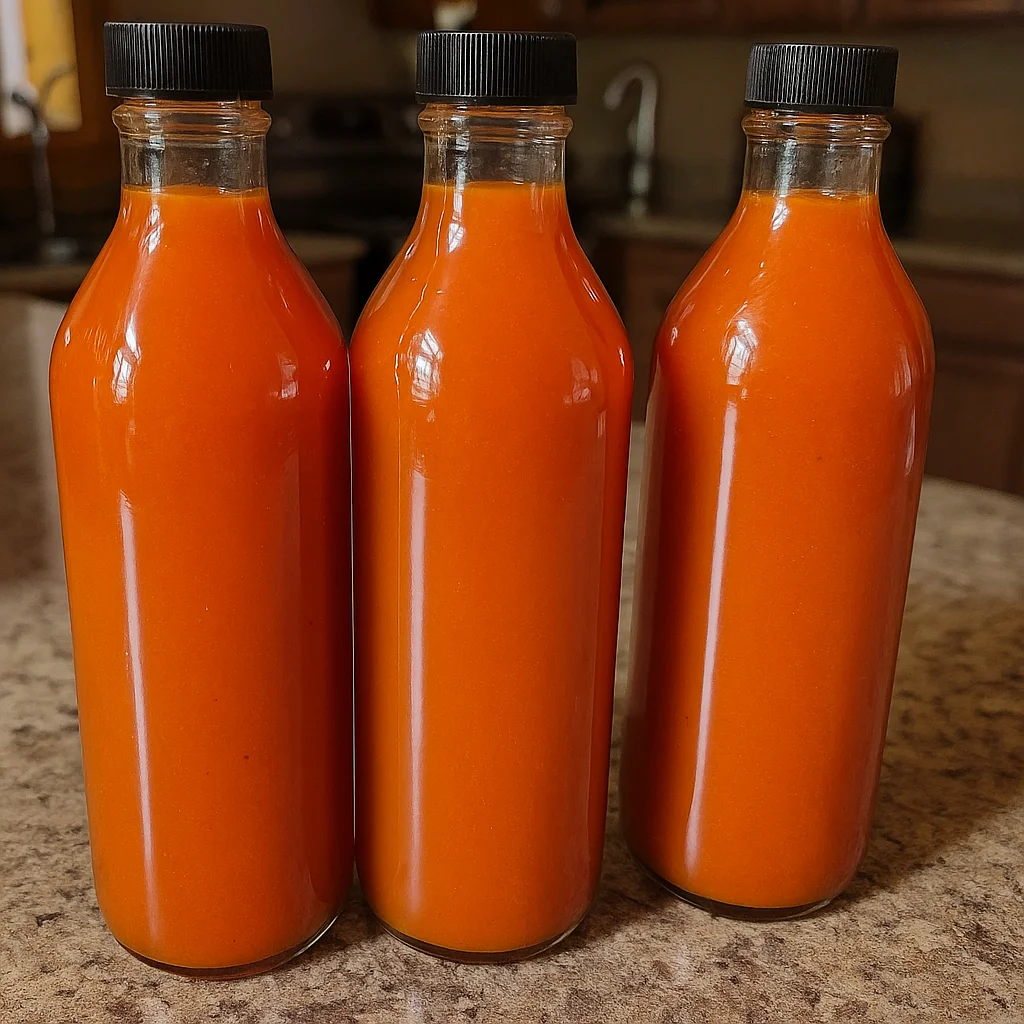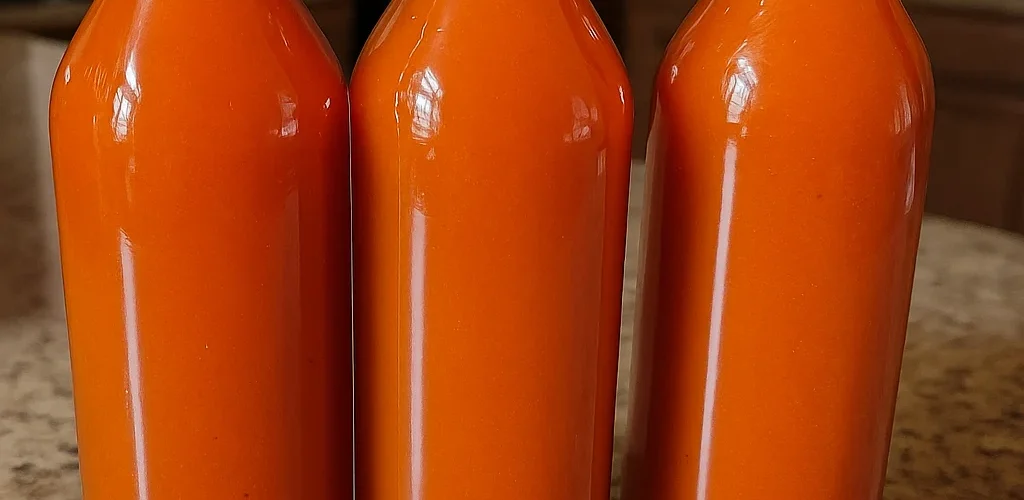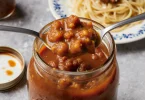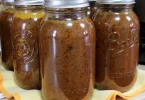
Introduction
There are foods that satisfy your hunger, and then there are foods that spark something deeper. Imagine taking a bite of crispy chicken, grilled vegetables, or even a simple egg sandwich—and suddenly, the flavors come alive with a fiery, tangy kick. That’s the magic of cayenne pepper sauce.
For many people, this sauce isn’t just about heat—it’s about emotion. Maybe you remember watching your parents drizzle hot sauce on Sunday breakfast, or maybe you first tried it at a restaurant where every dish felt bold and unforgettable. A bottle of cayenne pepper sauce has a way of bringing energy to meals, turning ordinary food into something memorable.
In this guide, you’ll discover how to make your own cayenne pepper sauce at home. You’ll learn its history, health benefits, variations, storage methods, and best food pairings. More importantly, you’ll see how this simple sauce can connect you with flavors that excite your senses and comfort your soul.
H2: What is Cayenne Pepper Sauce?
H3: Definition and Key Characteristics
Cayenne pepper sauce is a hot sauce primarily made from cayenne peppers, vinegar, garlic, and seasonings. It’s known for:
- Bright red color that adds visual appeal to food.
- Medium-high heat that’s strong but not overwhelming.
- Tangy finish thanks to vinegar.
Unlike other hot sauces that rely on exotic peppers, cayenne pepper sauce strikes a balance between spice and flavor, making it versatile and widely loved.
H3: Popular Uses
- Drizzled on wings and pizza.
- Stirred into soups and stews.
- Paired with grilled chicken, fish, or shrimp.
- Added to tacos, burritos, and nachos.
- Mixed into marinades, dips, or salad dressings.
H2: History and Origin of Cayenne Pepper Sauce
- Cayenne peppers originated in South America, named after the city of Cayenne in French Guiana.
- Indigenous cultures used them for cooking and medicine.
- Through trade, cayenne spread worldwide and became central in African, Asian, and American cuisines.
- In the 19th century, vinegar-based hot sauces began appearing commercially in the United States.
- Today, brands like Frank’s RedHot and Louisiana Hot Sauce have made cayenne pepper sauces kitchen staples.
This history proves cayenne pepper sauce isn’t just a condiment—it’s a culinary tradition that spans centuries.
H2: Health Benefits of Cayenne Pepper Sauce
Cayenne peppers aren’t only about flavor; they also offer impressive health perks.
- Boosts metabolism: Capsaicin increases calorie burning and fat oxidation.
- Aids digestion: Stimulates enzymes and digestive juices.
- Supports heart health: May reduce blood pressure and improve circulation.
- Reduces inflammation: Capsaicin is known for its anti-inflammatory properties.
- Rich in nutrients: Provides vitamins A, C, and E plus antioxidants.
- Natural pain relief: Topically, cayenne is used in creams for sore muscles and arthritis.
When you add cayenne pepper sauce to your diet, you’re not just adding flavor—you’re adding benefits for your health.
H2: Ingredients for Homemade Cayenne Pepper Sauce
H3: Core Ingredients (Table)
| Ingredient | Quantity | Notes |
|---|---|---|
| Fresh cayenne peppers | 20–25 peppers | Stems removed, adjust for heat level |
| White vinegar | 1 cup | Preserves and adds tang |
| Garlic cloves | 4–5 cloves | Balances spice with depth |
| Salt | 1 tsp | Enhances flavor |
| Sugar (optional) | 1 tsp | Smooths acidity and heat |
H3: Optional Additions
- Onion → adds sweetness.
- Carrots → thickens sauce naturally.
- Smoked paprika → introduces smoky notes.
- Fruit (mango, pineapple, peach) → balances heat with sweetness.
H2: Step-by-Step Guide to Making Cayenne Pepper Sauce
H3: Step 1 – Prepare the Peppers
- Wash thoroughly.
- Remove stems.
- Roughly chop (wear gloves to protect your hands).
H3: Step 2 – Simmer the Ingredients
- Add peppers, garlic, onion (optional), and vinegar to a saucepan.
- Simmer for 10–15 minutes until peppers soften.
H3: Step 3 – Blend Until Smooth
- Transfer mixture to a blender.
- Blend until silky.
- For a thinner sauce, strain through a fine sieve.
H3: Step 4 – Bottle and Store
- Pour into sterilized glass bottles or jars.
- Refrigerate immediately.
- Let it rest 2–3 days before using—the flavor deepens over time.
H2: Variations of Cayenne Pepper Sauce
- Fermented Cayenne Pepper Sauce: Let peppers ferment in saltwater brine for 1–2 weeks before blending for tangy complexity.
- Smoky Cayenne Sauce: Add roasted garlic, smoked paprika, or chipotle peppers.
- Sweet and Spicy Cayenne Sauce: Blend in honey, mango, or pineapple.
- Extra Hot Cayenne Blend: Mix cayenne with habanero or ghost peppers for extreme heat.
- Creamy Cayenne Sauce: Add yogurt or mayonnaise for a milder, creamy version.
H2: Tips for the Best Cayenne Pepper Sauce
- Always wear gloves to avoid skin irritation.
- Use fresh, ripe peppers for best flavor.
- Experiment with different vinegars for unique profiles.
- Let sauce rest before using—flavors need time to meld.
- Shake before serving, as natural separation may occur.
H2: Common Mistakes to Avoid
- Overcooking peppers: Creates bitterness.
- Too much vinegar: Overpowers pepper flavor.
- Skipping straining: Can leave sauce too chunky.
- Improper storage: Increases risk of spoilage.
- Ignoring safety: Handling hot peppers without gloves can burn skin and eyes.
H2: Storage and Shelf Life
- Refrigerated: Lasts 3–6 months in sterilized bottles.
- Fermented sauces: Can last up to 1 year if stored properly.
- Freezing: Not ideal, as texture changes.
- Signs of spoilage: Mold, foul odor, or bubbling → discard immediately.
H2: Best Foods to Pair with Cayenne Pepper Sauce
This sauce elevates almost any dish. Try it with:
- Chicken wings and tenders.
- Grilled meats and seafood.
- Pizza, burgers, and sandwiches.
- Tacos, burritos, and nachos.
- Eggs, omelets, and breakfast scrambles.
- Soups, stews, and chili.
H2: Nutritional Information (Approximate per Tablespoon)
| Nutrient | Amount |
|---|---|
| Calories | 5 |
| Carbohydrates | 1g |
| Vitamin C | 10% DV |
| Sodium | 50mg |
H2: FAQs About Cayenne Pepper Sauce
H3: How hot is cayenne pepper sauce?
Cayenne peppers measure 30,000–50,000 Scoville Heat Units (SHU), making the sauce medium-hot.
H3: Can I make cayenne pepper sauce less spicy?
Yes—remove seeds and mix with milder peppers like jalapeños.
H3: How long does homemade cayenne pepper sauce last?
Typically 3–6 months refrigerated in sterilized bottles.
H3: Can I use dried cayenne peppers?
Yes, soak them in warm water before blending.
H3: Is cayenne pepper sauce healthy?
Yes—in moderation. Capsaicin offers health benefits, but watch sodium intake.
Conclusion
The cayenne pepper sauce you’ve just learned to make is more than a condiment—it’s a spark of flavor that transforms ordinary meals into extraordinary experiences. With its perfect balance of heat, tang, and depth, it has earned a place at tables around the world.
By now, you know its history, health benefits, variations, and how to avoid common mistakes. You also have a detailed recipe to follow at home. Whether you drizzle it on wings, stir it into soups, or give it as a homemade gift, cayenne pepper sauce is sure to impress.
👉 Your Call-to-Action: Don’t wait to bring this fiery magic into your kitchen. Try making your own batch today, experiment with variations, and share it with friends or family. Once you see how much flavor it adds, you’ll never want to be without it again.







